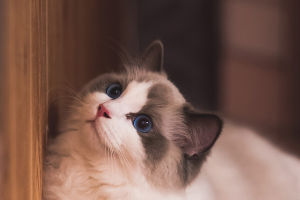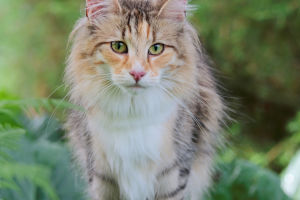Many people believe that cats and dogs can only see in shades of gray. However, this is not true. Cats can see some colors, not just black and white.
Cats, unlike humans, cannot distinguish between red and green. However, they do have some color vision. They are equipped with two types of cone cells sensitive to blue and green light. In contrast, humans possess three cone types, allowing them to perceive blue, red, and green hues.
This difference in cone cells affects their color perception.
Cats and humans have very different color vision. Humans' ancestors needed to gather a large number of plants and berries in addition to hunting. Their activities were mainly concentrated during the day when the light was bright.
Therefore, for humans, the ability to identify food by color is essential.
In the wild, cats predominantly hunt during the evening. Their visual needs lean more towards night vision and detecting motion rather than discerning colors, as identifying prey by color is less crucial for them. Furthermore, there's a noticeable disparity in saturation between what cats and humans perceive. The saturation of colors as seen by cats is considerably subdued compared to human vision.
The primary distinctions in color perception between humans and cats lie in the lack of visibility of colors with longer wavelengths, such as orange and red, in feline vision. Additionally, cats perceive blues and greens with a lower saturation than humans do. While the absence of the color red in cats' vision might appear to be a drawback, some researchers speculate that cats might have an edge over us in perceiving ultraviolet light, which is invisible to the human eye.
At this point, however, scientists do not know what color ultraviolet light would appear as it passes through a cat’s lens.
What the world looks like through the eyes of a kitten needs further exploration by scientists.
In addition to being color blind, cats are also nearsighted. Their field of vision is divided into two parts: one for observing prey during hunting and one for noticing environmental changes on both sides.
Relevant experts have compared the world seen by cats and humans and found that cats have a wider overall field of vision than humans. However, their eyesight is poor, and they can only see fuzzy shapes of objects far away from them.
They are very sensitive to moving objects, though, and will respond immediately if something moves.
Although cats are nearsighted, their sense of hearing and smell make up for this defect, so they are still very agile.


